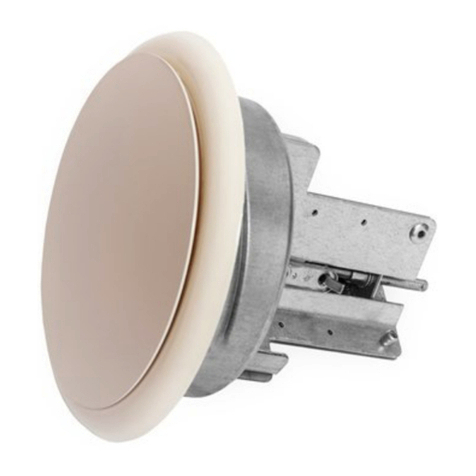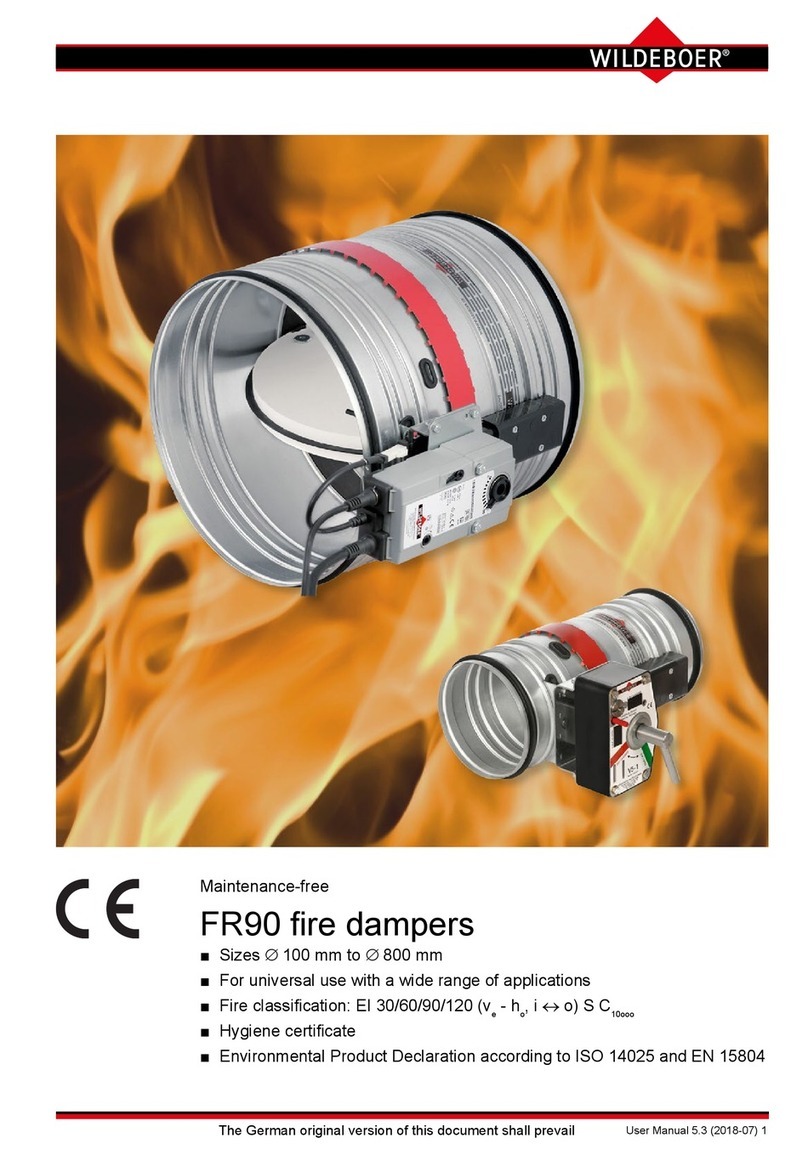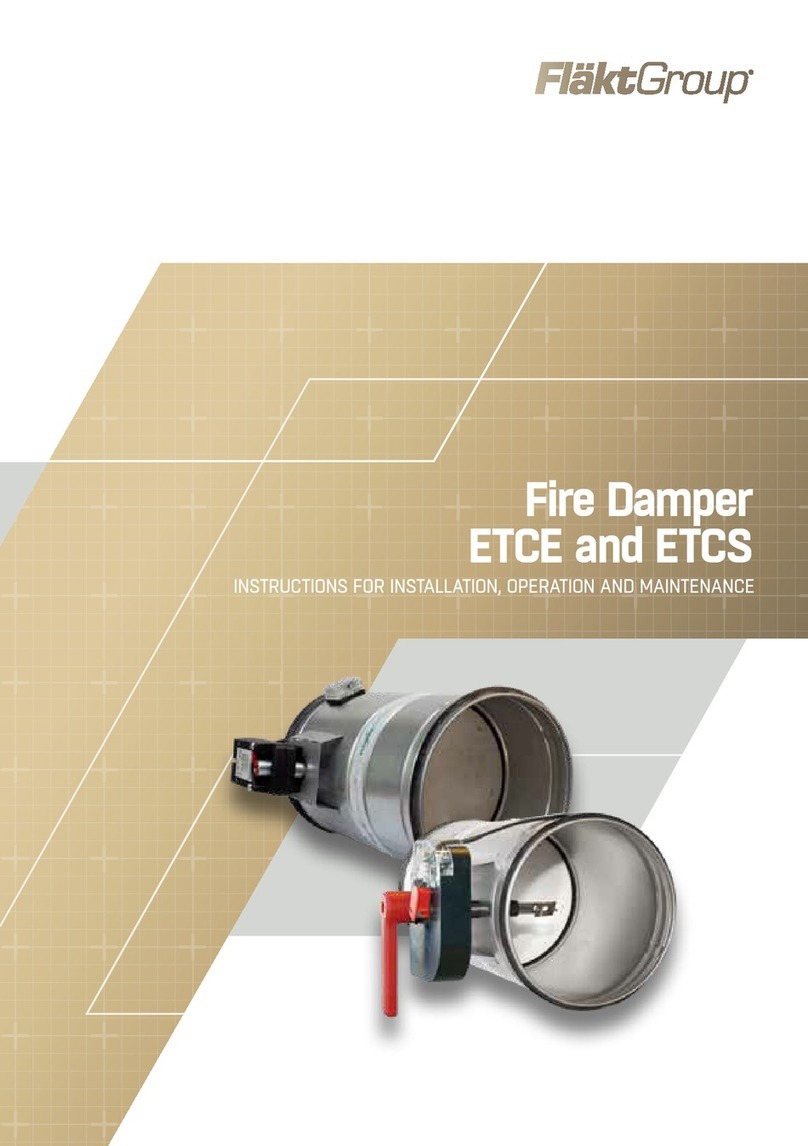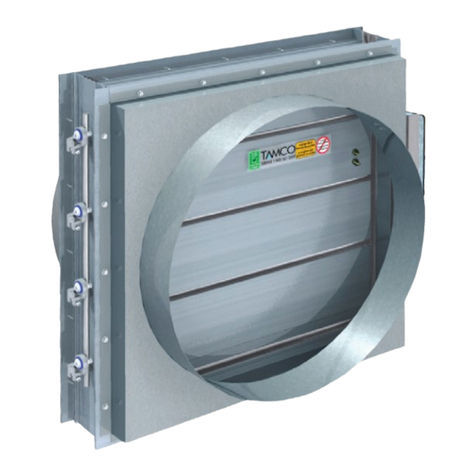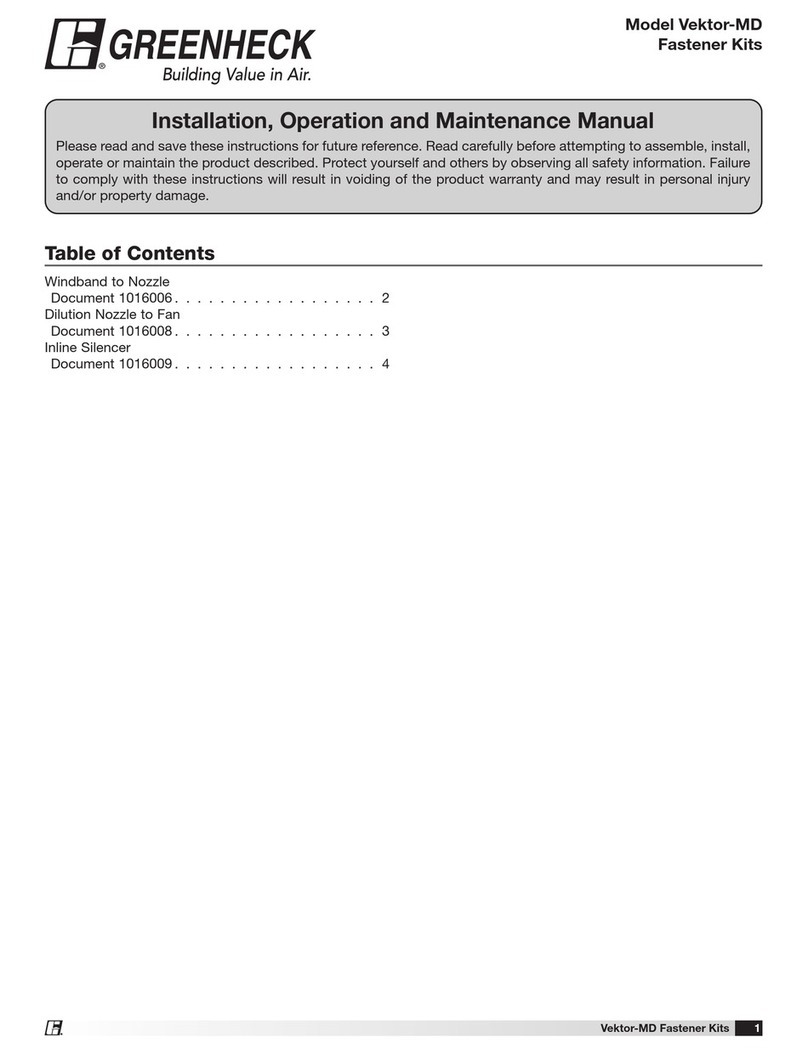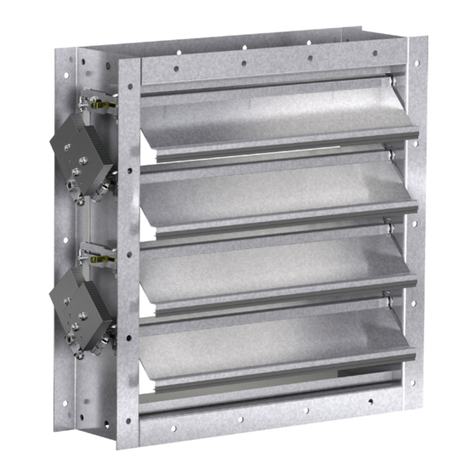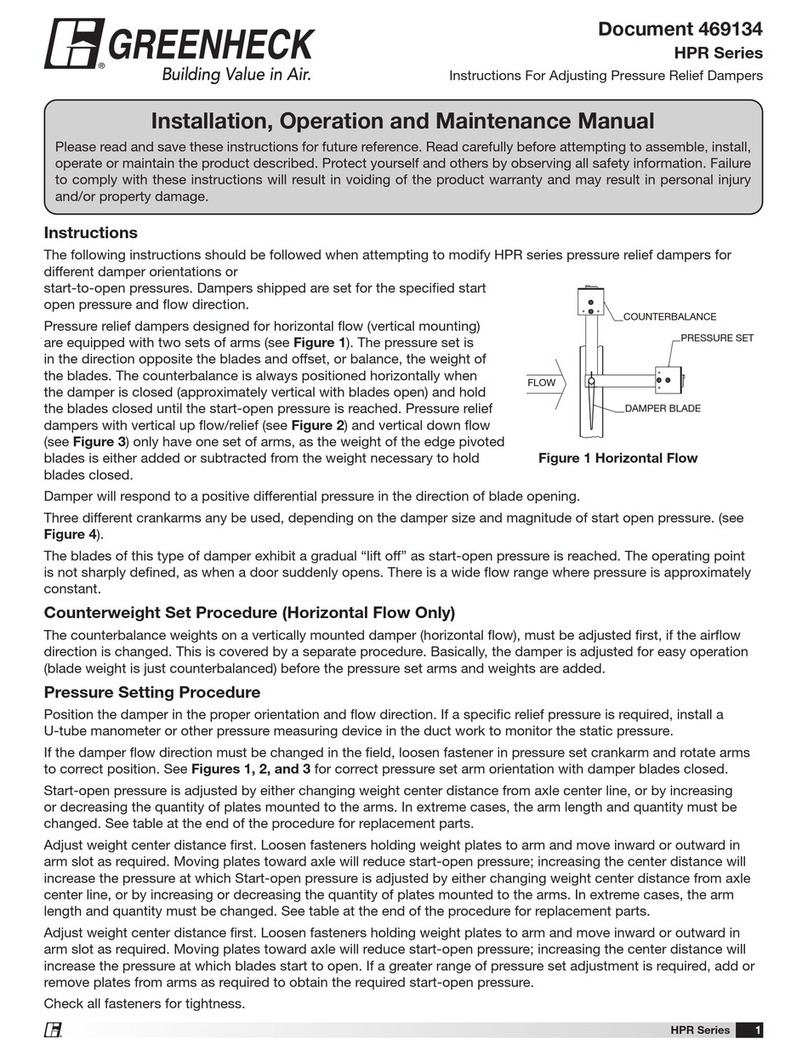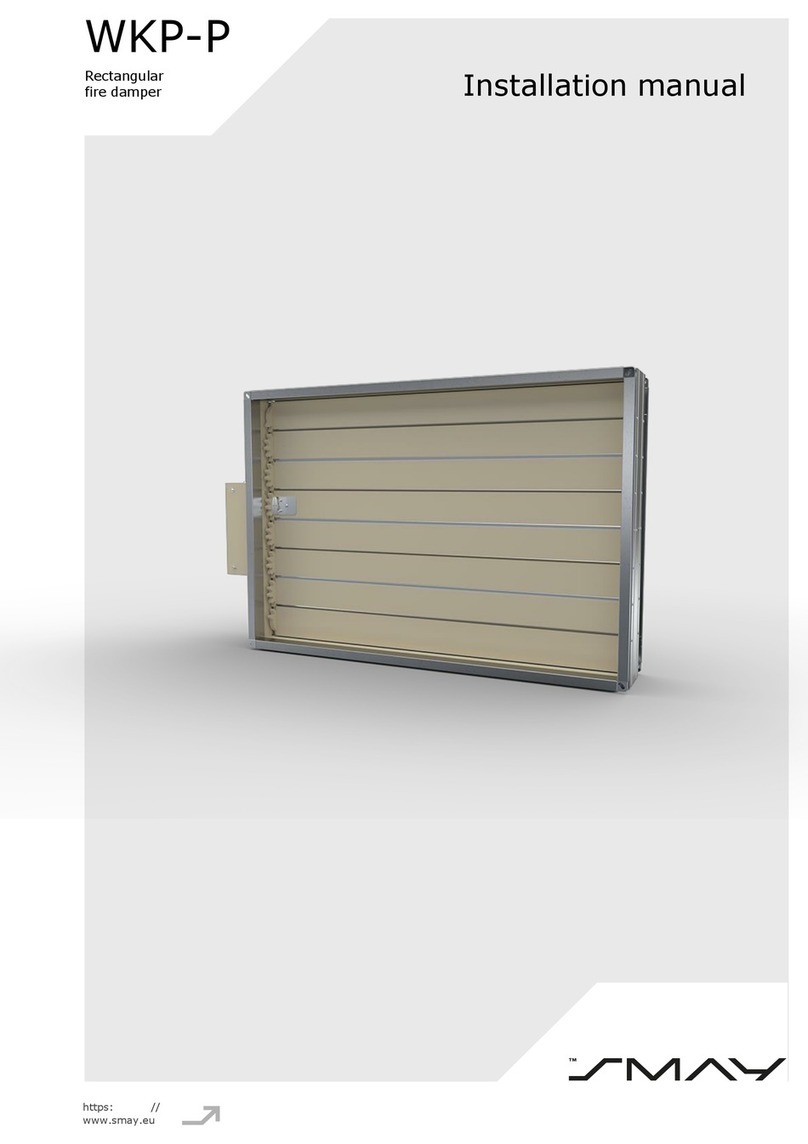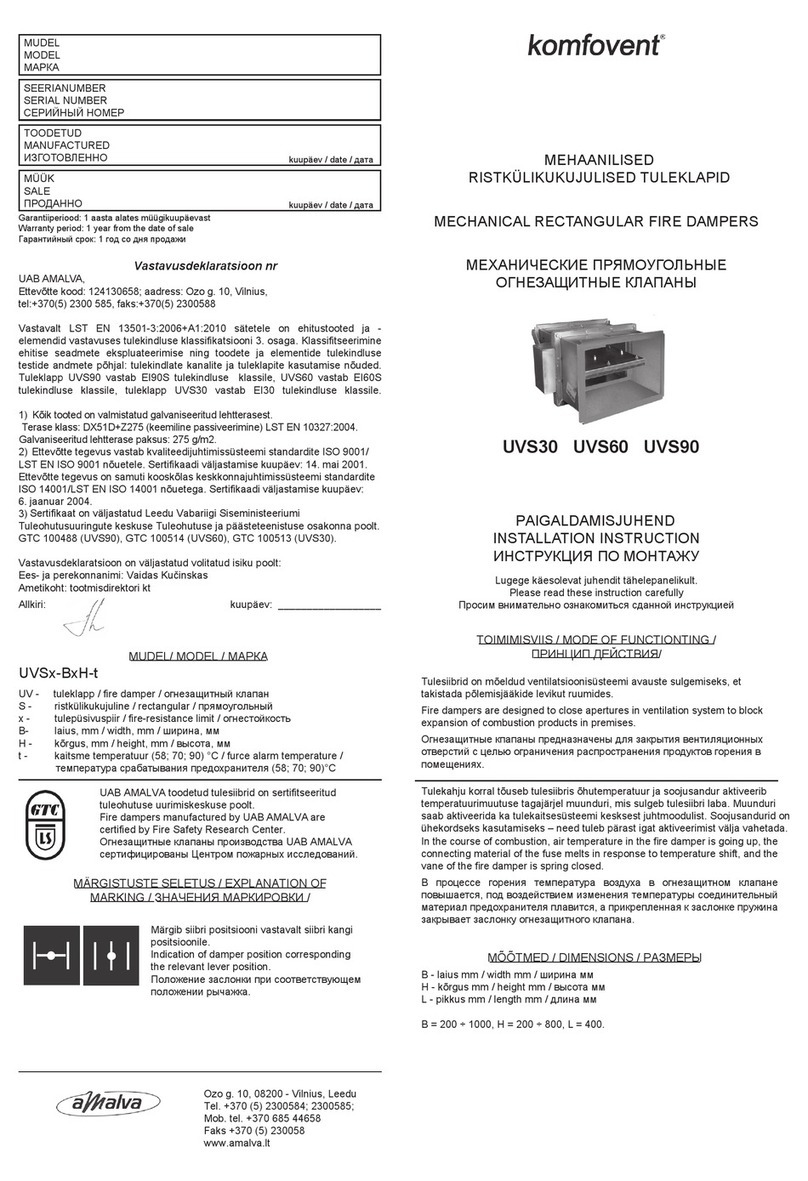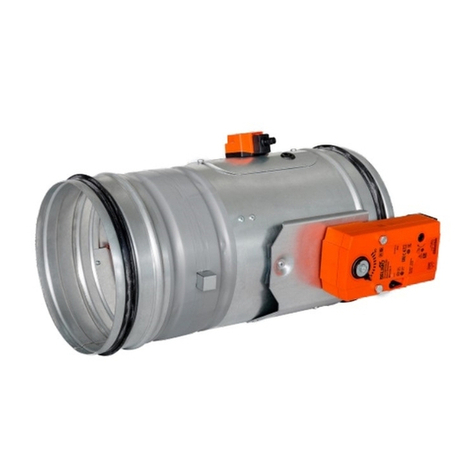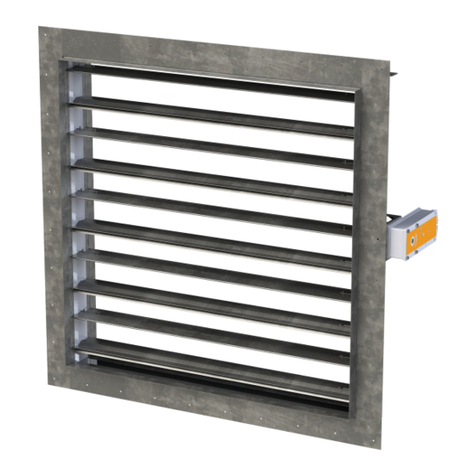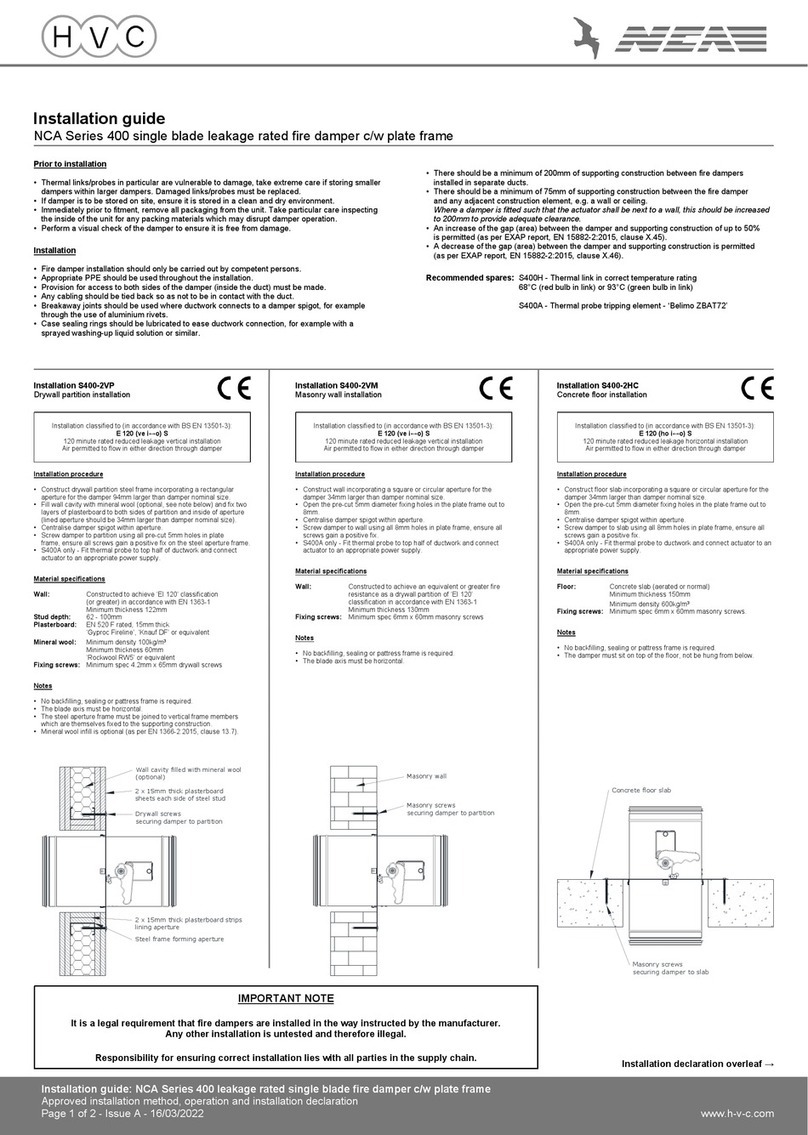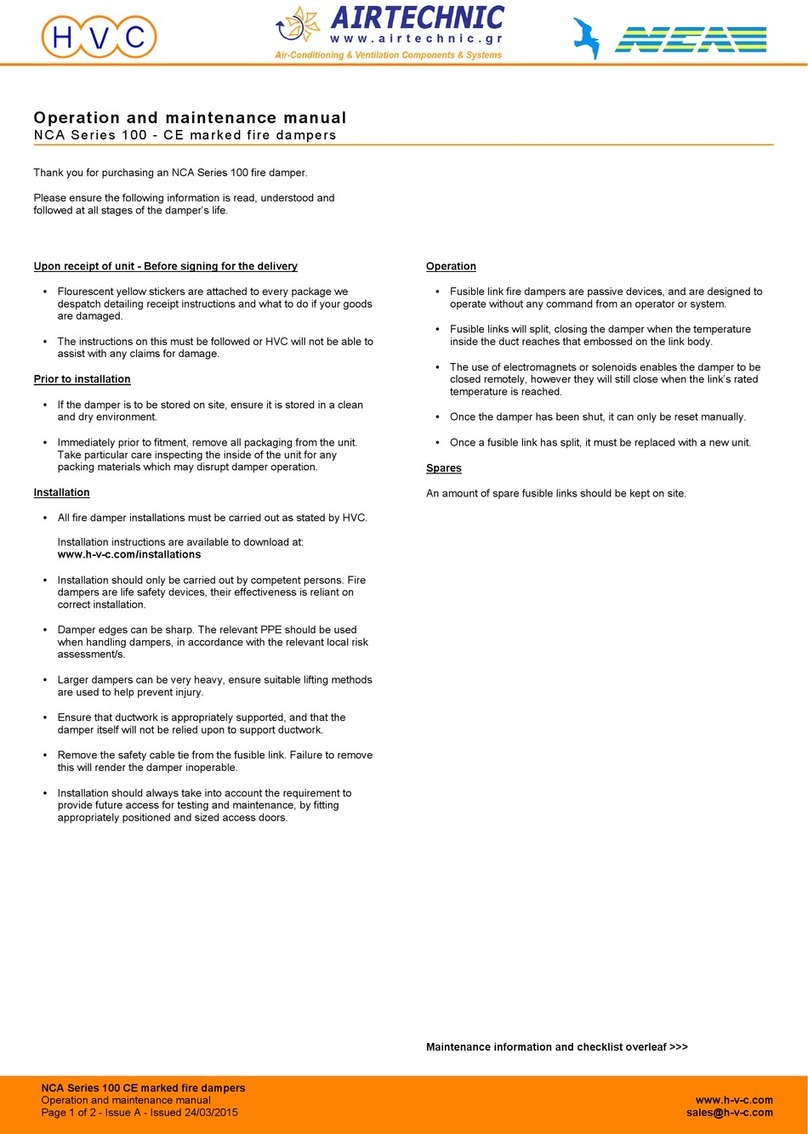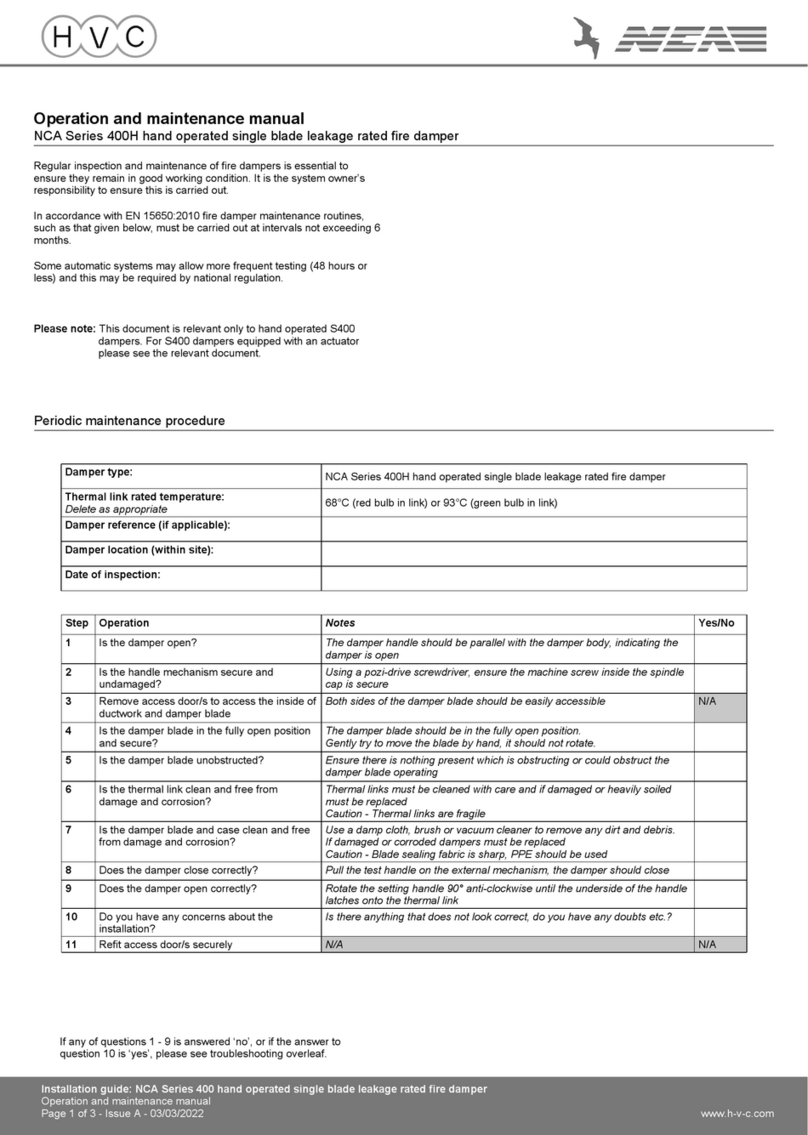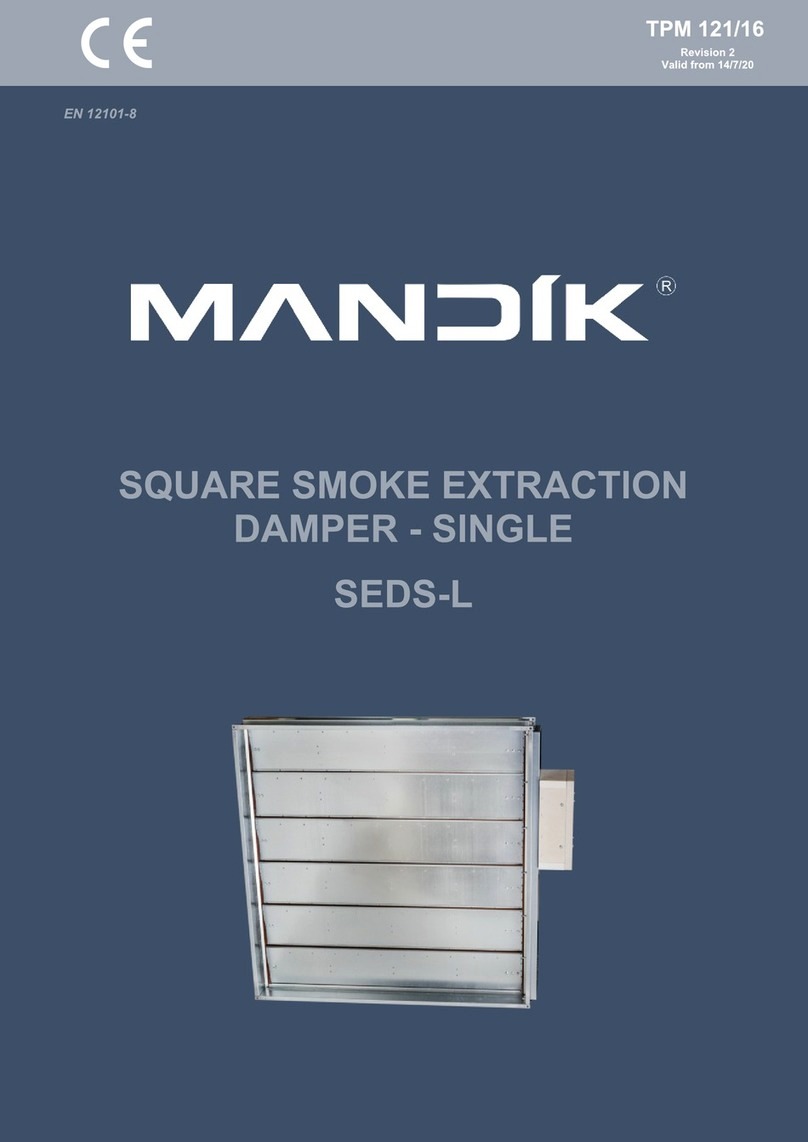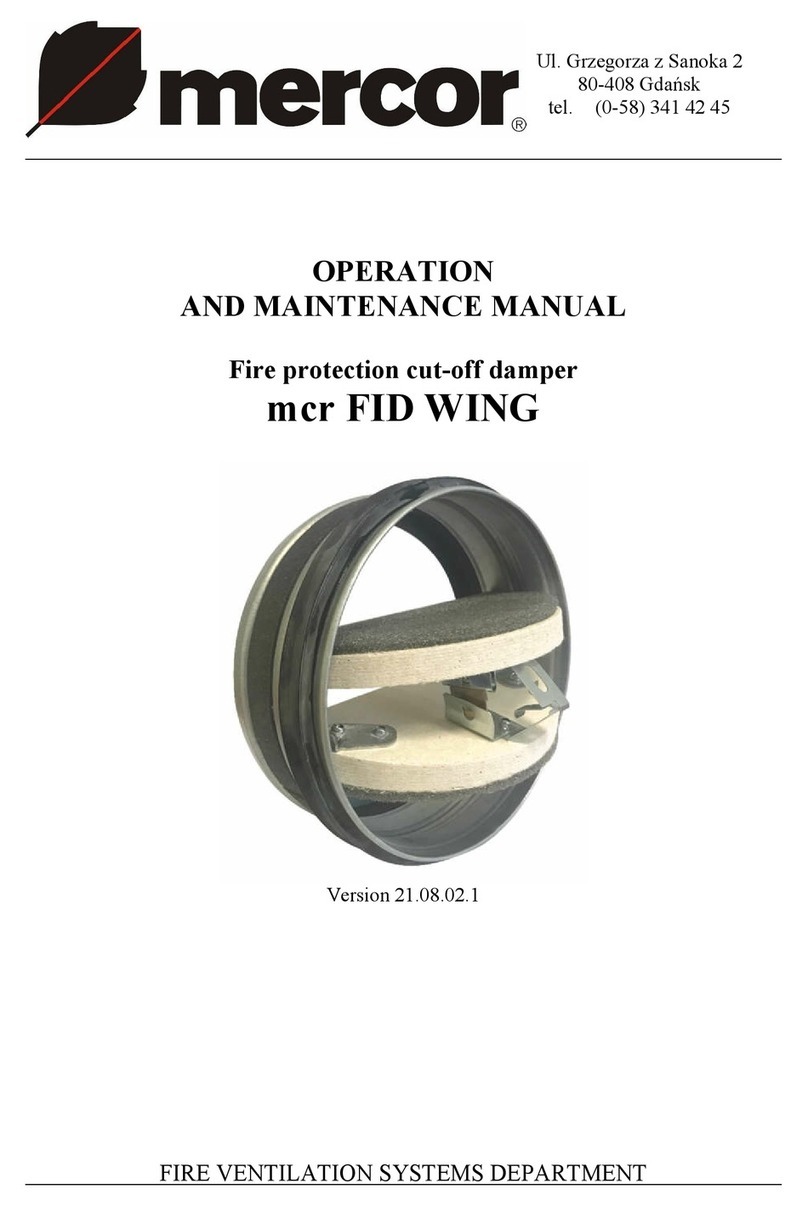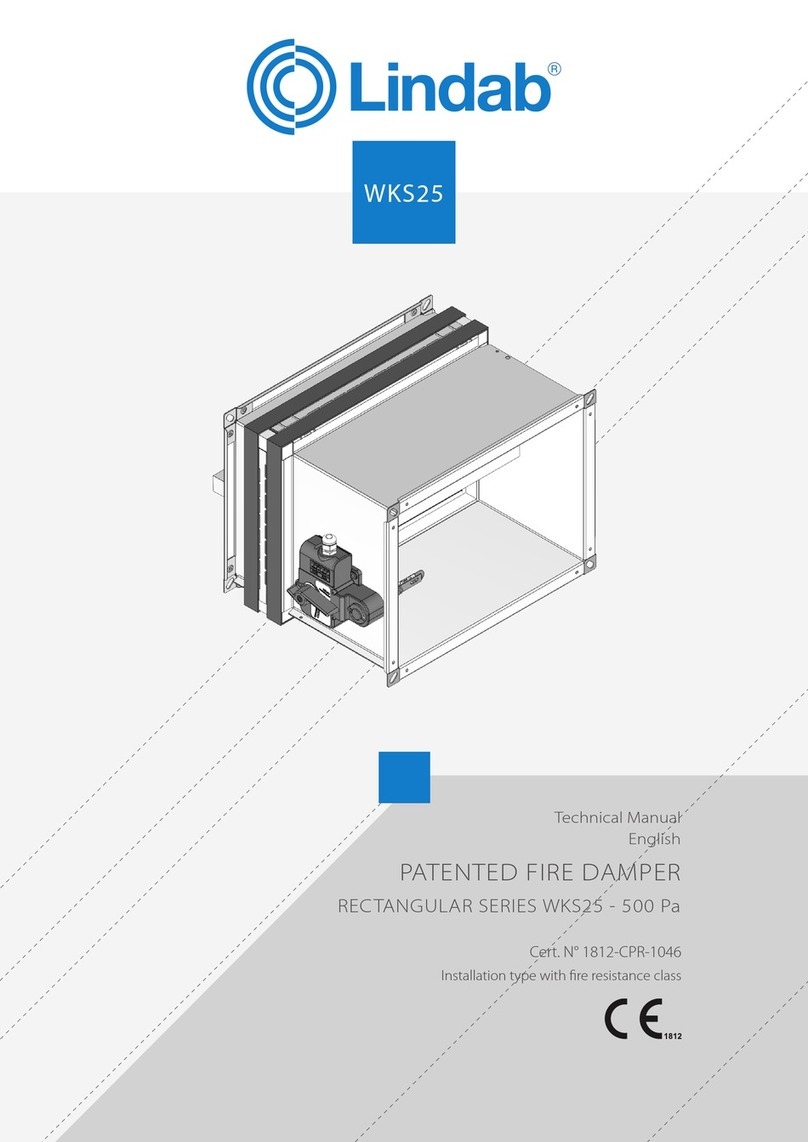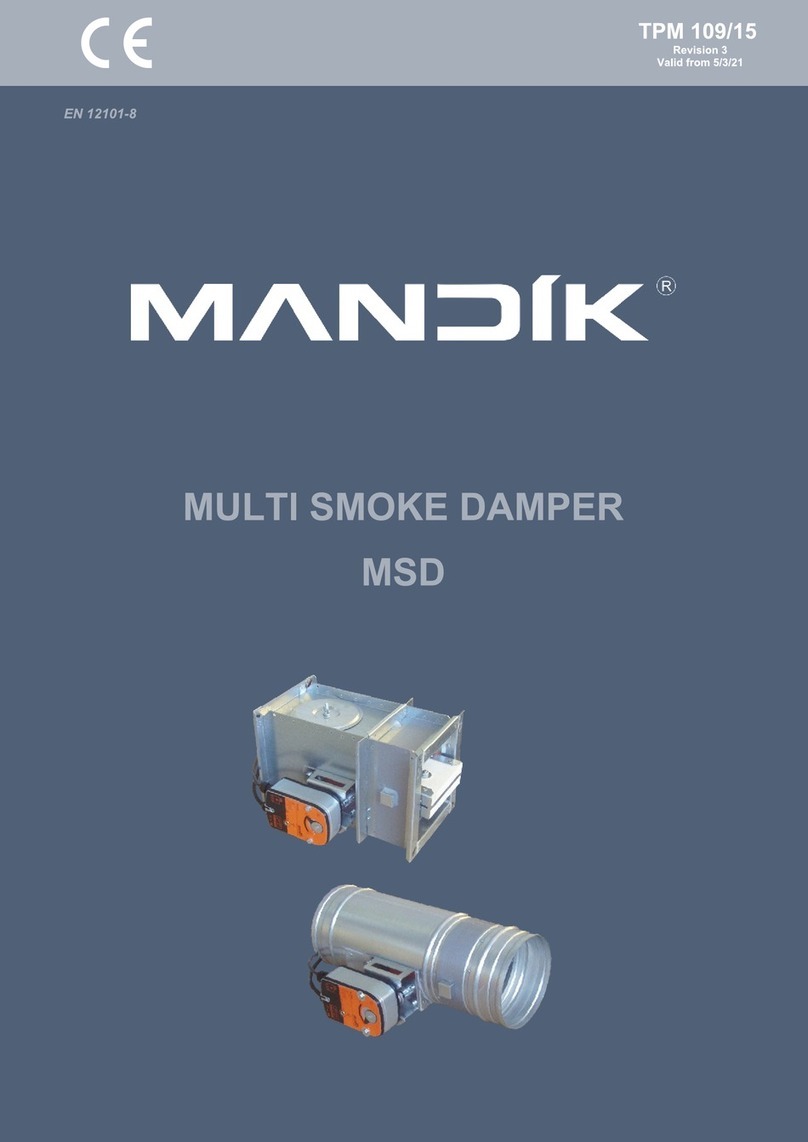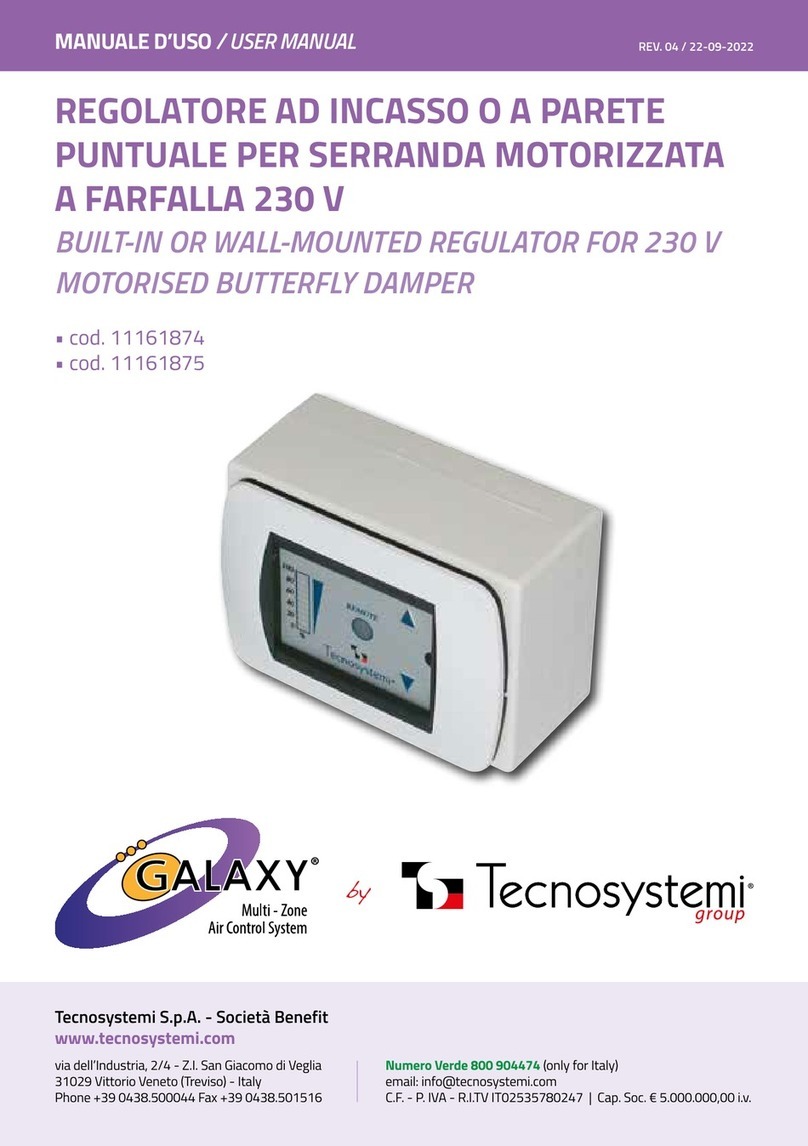
www.h-v-c.com
Symptom Possible causes Action
The thermal probe's LED is not lit and the
damper is closed
No power or incorrect supply Check supply
Thermal probe has been
tripped or is faulty
Replace thermal probe tripping element, part reference
‘Belimo ZBAT72’
Actuator faulty or damaged Replace actuator
See below: 'Actuator removal and replacement procedure'
Damper blades operating in unison but not
fully opening or closing
Damper motion obstructed by
debris
Remove debris
Ensure no damage has been caused to damper
Actuator fitted incorrectly Remove and refit actuator correctly
See below: 'Actuator removal and replacement procedure'
Ensure no damage has been caused to damper
Damper seized Lubrication required
See below: 'Lubrication procedure'
Mechanical failure Contact HVC
Damper blade/s loose and not synchronised Mechanical failure Contact HVC
Damper is noisy or judders during operation Lack of maintenance Lubrication required
See below: 'Lubrication procedure'
Multiple section unit only
The thermal probe's LED is lit but the
dampers are closed
Relay box fault Contact HVC
Multiple section unit only
Damper sections not synchronised
(e.g. one section closed, one section open)
Installation guide: NCA Series 700 motorised leakage rated fire damper
Operation and maintenance manual
Page 2 of 2 - Issue A - 27/05/2020
Actuator removal and replacement procedure
1. Isolate and disconnect existing actuator from power supply (or
multiple fire damper relay box), actuator will spring closed.
2. Remove actuator from damper (4 qty M6 bolts), retain bolts.
3. If the unit is a single section, remove thermal probe from
ductwork (2 qty screws). If unit is a multiple section do not
remove the thermal probe.
4. Ensure the new actuator is in its closed position by inserting
the winding handle (supplied) and relieving the factory set
spring tension.
5. Ensure the damper is still in its closed position.
6. With the side labelled ‘R’ of the actuator facing away from the
damper (the ‘L’ side towards the damper), slide the actuator
onto the 12mm square spindle.
7. Using the retained M6 bolts fit the new actuator to the damper,
and the thermal probe to ductwork if one was previously
removed.
8. Connect the new actuator to an appropriate power supply (or
multiple fire damper relay box), allow the damper to open and
then conduct a cycle test as per steps 9 and 10 of the periodic
maintenance procedure.
Troubleshooting
Additional procedures
Lubrication procedure
1. Remove access door/s to access the inside of ductwork and
damper blades
2. Clean damper if required following step 7 of the periodic
maintenance procedure.
3. Depress the stainless steel side seals, and apply a small
amount of light oil (WD40 spray grease recommended) directly
into the blade axle bushes.
4. If required a light application of oil can be made to the blade
ends and stainless steel side, top and bottom seals.
5. Remove any excess oil with a cloth.
6. Conduct a cycle test as per steps 9 and 10 of the periodic
maintenance procedure and observe whether the operation
has improved. Several reapplications/cycles may be required
to permit the lubricant to reach all required areas.
Contact HVC if the above does not solve your problem.
Periodic maintenance procedure overleaf →
